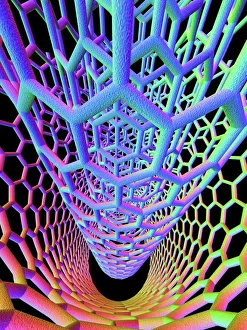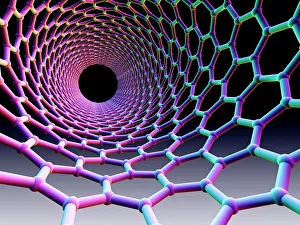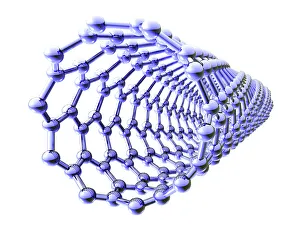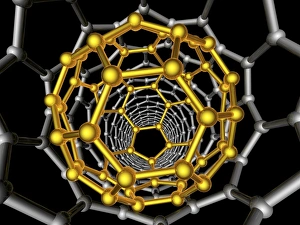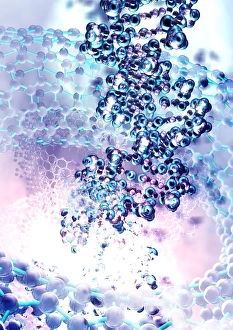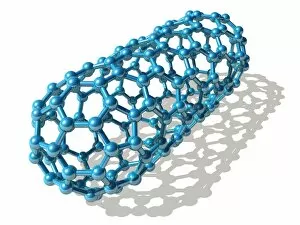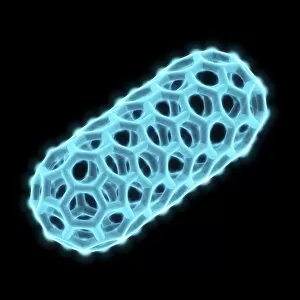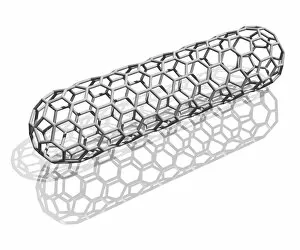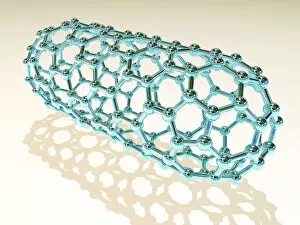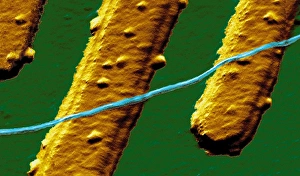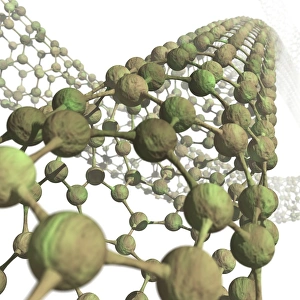Carbon Nanotube Collection
Carbon nanotubes are a groundbreaking innovation in the field of nanotube technology
All Professionally Made to Order for Quick Shipping
Carbon nanotubes are a groundbreaking innovation in the field of nanotube technology. These tiny cylindrical structures, made entirely of carbon atoms, have revolutionized various industries with their exceptional properties. In this computer artwork, we catch a glimpse of the intricate structure and potential applications of carbon nanotubes. One remarkable application is the concept of a space elevator, depicted here in another captivating artwork. Carbon nanotubes possess incredible strength and lightness, making them an ideal material for constructing such futuristic marvels. With their unparalleled tensile strength, these tubes could potentially connect Earth to outer space, enabling efficient transportation beyond our planet's boundaries. The versatility of carbon nanotubes extends far beyond space exploration. From electronics to energy storage and even medicine, these minuscule wonders hold immense promise. Their unique electrical conductivity allows for faster and more efficient electronic devices while reducing power consumption. In this stunning artwork showcasing intertwined carbon nanotubes resembling a complex web-like structure, we witness their potential as advanced materials for various applications. Whether it be reinforcing structural materials or enhancing energy storage capabilities in batteries or supercapacitors – the possibilities seem endless. As scientists continue to delve into the realm of nanoengineering and explore new ways to harness the extraordinary properties of carbon nanotubes, we eagerly anticipate witnessing further breakthroughs that will shape our future technologies and propel us towards unimaginable advancements across multiple fields.

